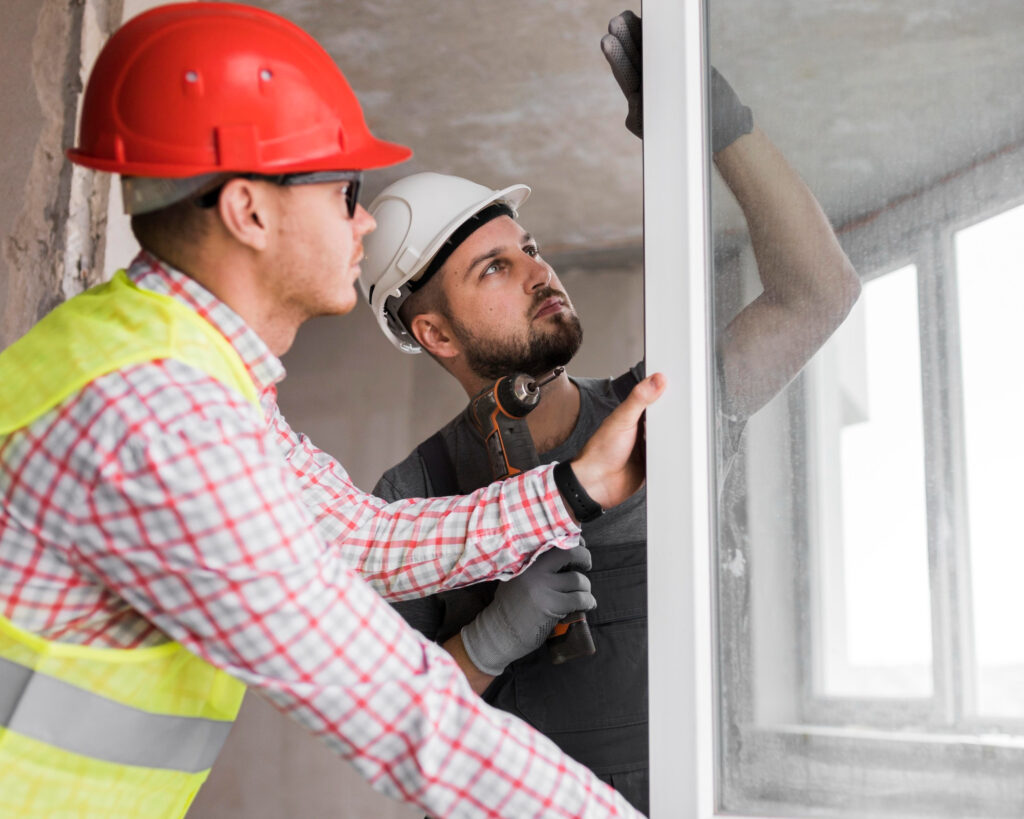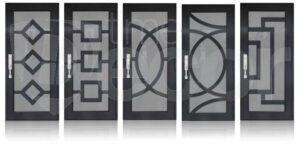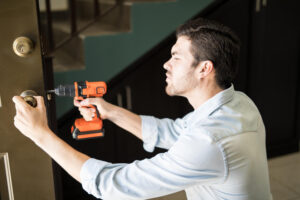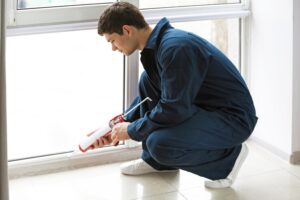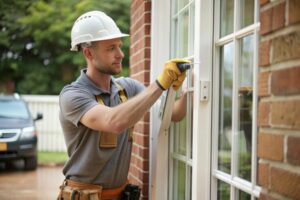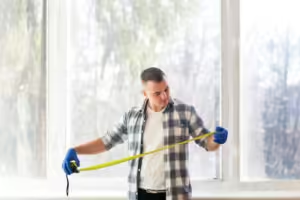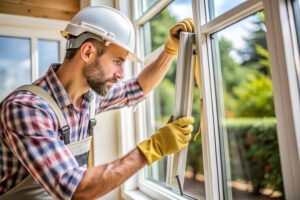Add Your Heading Text Here
Sliding doors provide an elegant touch and easy access to outdoor living space, but at some point, they can run into irritating problems. Sticky tracks, broken locks, and other issues put your convenience, and security at risk. The challenge is that many homeowners in Aventura overlook subtle signs like squeaking sounds or slight resistance. They eventually end up with more significant, and expensive repairs down the line.
Recognizing common sliding door problems allows you to resolve them at their early stages, either with basic upkeep or expert repair. In this article, we help you pinpoint accurate causes by breaking down common sliding door problems, along with how you can have them operating smoothly again. Whether you’ve got a jammed door or drafty seals, knowing these issues will help save you time, money, and stress. Let’s get started.
Sticking/Jammed Doors
Sliding doors will stick and jam because dirt and debris have accumulated in the track system, or the tracks have become misaligned. The aluminum tracks can become filled with dust, sand or pet hair over time causing friction that will prevent smooth operation. In more severe situations, the door might have come off its track, or the rollers may be broken. Use a vacuum and soft brush to clean it regularly to avoid build up. In persistent cases, pro realignment or roller replacement should return it to normal operation. Never force a stuck door; you may permanently damage the frame or the tracking system.
Recognizing common sliding door problems allows you to resolve them at their early stages, either with basic upkeep or expert repair. In this article, we help you pinpoint accurate causes by breaking down common sliding door problems, along with how you can have them operating smoothly again. Whether you’ve got a jammed door or drafty seals, knowing these issues will help save you time, money, and stress. Let’s get started.
Worn-Out Rollers
The nylon or metal rollers that enable smooth movement of a door wear out after years of use. Once this happens, you will notice increased resistance when sliding, jerky movement, or visible wear and tear on the roller wheels. Poor rollers may grind and may cause the door to tilt or drag. Replacement rollers must conform to your door’s measurements. Most residential doors use 2-inch nylon rollers. It is possible to adjust the roller height to ensure the unit opens and closes with ease and stays securely. Genuinely high-grade replacements will last 5-10 years on an average use.
Recognizing common sliding door problems allows you to resolve them at their early stages, either with basic upkeep or expert repair. In this article, we help you pinpoint accurate causes by breaking down common sliding door problems, along with how you can have them operating smoothly again. Whether you’ve got a jammed door or drafty seals, knowing these issues will help save you time, money, and stress. Let’s get started.
Misaligned Tracks
Misalignment of the track happens from physical impacts or incorrect installation. Symptoms include doors that pop out of track, uneven gaps down the edges, or difficulty closing all the way. Aluminum rails can bend with too much force or temperature fluctuation. Track restorers use specialized tools to straighten tracks and align them correctly. In extreme cases, you may need to totally replace such track. When properly aligned, the tracks should allow the door to slide smoothly with little effort and be spaced evenly from the frame on all four sides.
Recognizing common sliding door problems allows you to resolve them at their early stages, either with basic upkeep or expert repair. In this article, we help you pinpoint accurate causes by breaking down common sliding door problems, along with how you can have them operating smoothly again. Whether you’ve got a jammed door or drafty seals, knowing these issues will help save you time, money, and stress. Let’s get started.
Cracked/Broken Glass
Impact, thermal stress or structural movement can crack sliding door glass. Even minor fissures endanger security and energy efficiency through air infiltration. For safety, tempered glass is used. It shatters into small, dull pieces, rather than razor-sharp shards. Replacement requires careful measurements of the glass panel thickness and size. The pros use butyl tape or silicone to seal the inside so moisture does not seep in and insulation values are not lost. Replacement options for improved security and energy savings include laminated or double-pane glass.
Recognizing common sliding door problems allows you to resolve them at their early stages, either with basic upkeep or expert repair. In this article, we help you pinpoint accurate causes by breaking down common sliding door problems, along with how you can have them operating smoothly again. Whether you’ve got a jammed door or drafty seals, knowing these issues will help save you time, money, and stress. Let’s get started.
Faulty Lock Mechanisms
The most common lock problems are stuck latches, broken keys, or a mechanism that won’t fully engage. Issues include dirt build up, rusting, or worn-out internal parts. Some locks are especially sensitive to misalignment in doors due to their bolts (or locking points). Graphite powder (not oil) lubrication on a regular basis prevents most of those problems. For repairs, the technicians take apart the mechanism to clean or swap out damaged components.
Recognizing common sliding door problems allows you to resolve them at their early stages, either with basic upkeep or expert repair. In this article, we help you pinpoint accurate causes by breaking down common sliding door problems, along with how you can have them operating smoothly again. Whether you’ve got a jammed door or drafty seals, knowing these issues will help save you time, money, and stress. Let’s get started.
Derailed Doors
During a complete derail, the rollers come off the track, usually due to some incredible force, or worn components. Trying to push the door back may damage the frame or glass. To do this correctly, the door must be lifted straight up to realign the rollers, and the tracking system then adjusted. Technicians look for bent tracks, damaged rollers or structural problems that caused the derailment. Track cleaning and not slamming the door are all preventative actions. It should be noted that commercial models with deeper flanges are less prone to derail than residential rollers
Recognizing common sliding door problems allows you to resolve them at their early stages, either with basic upkeep or expert repair. In this article, we help you pinpoint accurate causes by breaking down common sliding door problems, along with how you can have them operating smoothly again. Whether you’ve got a jammed door or drafty seals, knowing these issues will help save you time, money, and stress. Let’s get started.
Squeaking/Grinding Noises
During a complete derail, the rollers come off the track, usually due to some incredible force, or worn components. Trying to push the door back may damage the frame or glass. To do this correctly, the door must be lifted straight up to realign the rollers, and the tracking system then adjusted. Technicians look for bent tracks, damaged rollers or structural problems that caused the derailment. Track cleaning and not slamming the door are all preventative actions. It should be noted that commercial models with deeper flanges are less prone to derail than residential rollers
Recognizing common sliding door problems allows you to resolve them at their early stages, either with basic upkeep or expert repair. In this article, we help you pinpoint accurate causes by breaking down common sliding door problems, along with how you can have them operating smoothly again. Whether you’ve got a jammed door or drafty seals, knowing these issues will help save you time, money, and stress. Let’s get started.
Air/Water Leaks
Leaks occur when seals fail or when the door sags away from the frame. You’ll feel drafts, see light coming in, or water when it rains. Repair means adjusting the alignment of the door, or replacing weatherstripping or threshold seals. It doesn’t necessarily mean that professionals need to shim your frame or adjust the roller height to help the door close properly again. Air leakage rates can be quantifiably evaluated to verify effectiveness of repairs.
Locking Difficulties
What usually causes the locks not to engage properly is the settling of the frame or wear in the hardware. Its position maybe off as little as 1/8 inch. Fixes involve moving the strike plate, replacing worn latch assembly parts or, in some cases, adding shims behind the door frame. Electronic locks require regular maintenance of the batteries and the cleaning of their mechanisms. When it comes to locks on security doors, make sure you always use locksets, with high durability standards. Locks should engage smoothly without needing to apply excessive force.
Conclusion
These are just a tip of the iceberg when it comes to what can go wrong with your sliding door in Aventura. Don’t worry though because we are here to help fix any fault. We have the best professionals around who understand everything about sliding doors and their faults. All you have to do is contact us now to get started. Our expertise is next to none and you will definitely get maximum value for money spent.

